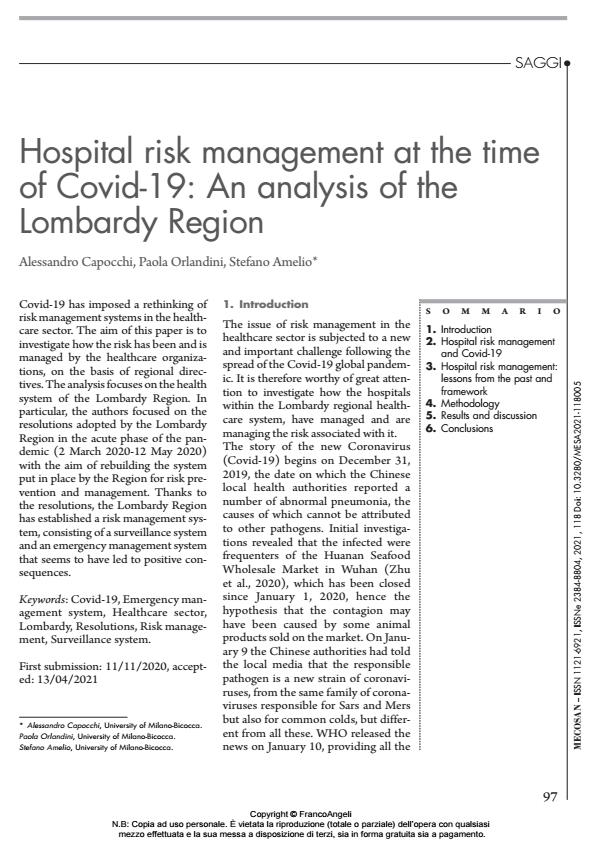Hospital risk management at the time of Covid-19: An analysis of the Lombardy Region
Titolo Rivista MECOSAN
Autori/Curatori Alessandro Capocchi, Paola Orlandini, Stefano Amelio
Anno di pubblicazione 2021 Fascicolo 2021/118
Lingua Inglese Numero pagine 20 P. 97-116 Dimensione file 280 KB
DOI 10.3280/MESA2021-118005
Il DOI è il codice a barre della proprietà intellettuale: per saperne di più
clicca qui
Qui sotto puoi vedere in anteprima la prima pagina di questo articolo.
Se questo articolo ti interessa, lo puoi acquistare (e scaricare in formato pdf) seguendo le facili indicazioni per acquistare il download credit. Acquista Download Credits per scaricare questo Articolo in formato PDF

FrancoAngeli è membro della Publishers International Linking Association, Inc (PILA)associazione indipendente e non profit per facilitare (attraverso i servizi tecnologici implementati da CrossRef.org) l’accesso degli studiosi ai contenuti digitali nelle pubblicazioni professionali e scientifiche
Covid-19 has imposed a rethinking of risk management systems in the healthcare sector. The aim of this paper is to investigate how the risk has been and is managed by the healthcare organizations, on the basis of regional directives. The analysis focuses on the health system of the Lombardy Region. In particular, the authors focused on the resolutions adopted by the Lombardy Region in the acute phase of the pandemic (2 March 2020-12 May 2020) with the aim of rebuilding the system put in place by the Region for risk prevention and management. Thanks to the resolutions, the Lombardy Region has established a risk management system, consisting of a surveillance system and an emergency management system that seems to have led to positive consequences.
Parole chiave:Covid-19, Emergency management system, Healthcare sector, Lombardy, Resolutions, Risk management, Surveillance system.
Alessandro Capocchi, Paola Orlandini, Stefano Amelio, Hospital risk management at the time of Covid-19: An analysis of the Lombardy Region in "MECOSAN" 118/2021, pp 97-116, DOI: 10.3280/MESA2021-118005